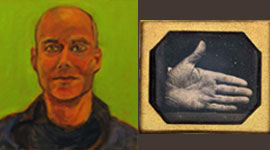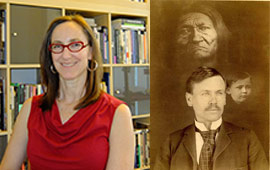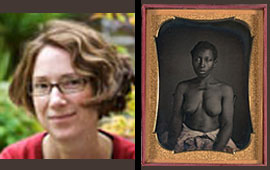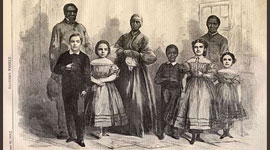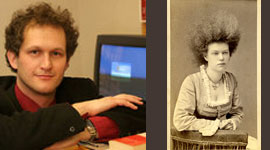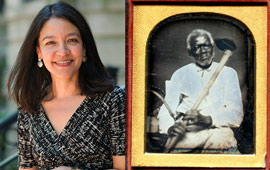Juxtaposing an 1850 daguerreotype portrait of a slave, a painting by Jean-François Millet, a photograph by Lewis Hine, and a poem by Sterling Brown, this essay seeks to understand how, and under what conditions, even forced labor may be reclaimed and commemorated in works of art.
|
Martin A. BergerWhite Suffering and the Branded HandThis essay analyzes the social and racial significance of an unusual mid-nineteenth-century daguerreotype of a white abolitionist’s branded hand. |
Erina DuganneBlack Civil War Portraiture in ContextAn investigation into the kinds of meanings that photographic portraits of black Civil War soldiers had at the time of their making as well as some of the challenges that such a recovery poses for historians today. |
|
Shawn Michelle SmithA Spirit PhotographAn analysis of a “spirit photograph,” a form of photography thought to bridge this world and the next. |
Gregory FriedTrue Pictures: Frederick Douglass on the Promise of PhotographyThis essay explores the ideas of Frederick Douglass on the revolutionary significance of photography for the cause of abolishing slavery and for advancing human equality. |
|
Joan GageA White Slave Girl: Mulatto Raised by Charles SumnerA narrative of discovery about one of the first photographs used to promote the abolitionist cause. |
Molly RogersFair Women Are Transformed into NegressesA meditation on writing about oppressed individuals photographed for scientific purposes, and whether it is possible to liberate such people through an act of imagination. |
|
Carol GoodmanAs White as Their Masters: Visualizing the Color LineA discussion of the ambiguity of the color line in nineteenth-century visual representations of race. |
Maria Helena P. T. Machado, Flávio dos Santos Gomes, and John M. MonteiroThree Essays on Agassiz in BrazilThis series of essays explores an important but little known collection of ethnographic photographs made by the Swiss-American naturalist Louis Agassiz during an expedition to Brazil in 1865–66. |
|
Molly RogersLouis Agassiz: Full Face and ProfileA biographical approach to photographs of slaves, considering the images in relation to the personal and professional attitudes of the naturalist who commissioned them. |
Gregory FriedA Freakish Whiteness: The Circassian Lady and the Caucasian FantasyWhat is the meaning of mid-nineteenth-century portraits of white women with strange names, exotic costumes, and wildly frizzed hair? |
|
Dominique ZinoOn Seeing and Writing Together: An introduction to a multimedia, collaborative writing projectThis collaborative essay by a professor and her students in a college writing course demonstrates how the images in the Mirror of Race exhibition may be used to teach research and reflection on the meaning of race in American history and culture. |
|

